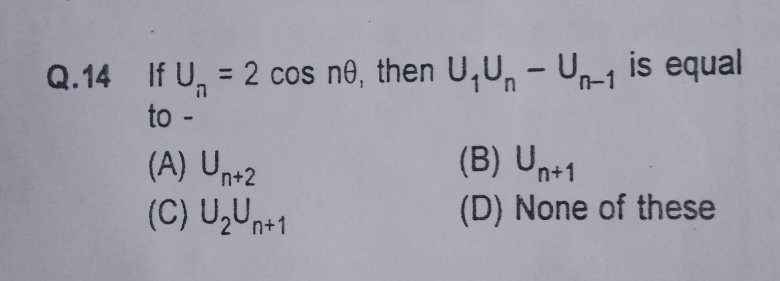
Question and Answers Forum
AllQuestion and Answers: Page 1805









Pg 1800 Pg 1801 Pg 1802 Pg 1803 Pg 1804 Pg 1805 Pg 1806 Pg 1807 Pg 1808 Pg 1809
|
Question and Answers Forum |
AllQuestion and Answers: Page 1805 |

|

|

|

|

|
| how can demonstred 17^(4n+1) +3×9^(2n+1) ≡0[11] |

|
| A wedge has two equally rough faces each inclined at 30° to the horizontal.Masses of 5kg and 2kg ,one on each face,are connected by a light string passing over a smooth pulley at the top of the wedge.The coefficient of friction μ, between each masses and the surface of the wedge is 0.2.Find the acceleration of the masses when they are released. |
| A horizontal force of 10N just prevents a mass of 2kg from sliding down a rough plane inclined at 45° to the horizontal. Find the coefficient of friction. |
| The correct order of second ionisation energy in the following : (a) F > O > N > C (b) O > F > N > C (c) O > N > F > C (d) C > N > O > F |
| which is your favourite subject? |
| The Enthalpy of neutralization of acetic acid and sodium hydroxide is −55.4 kJ. What is the enthalpy of ionisation of acetic acid? |

|
| solve: sin(x)=2, x∈C |
| Equal forces act on two bodies which are initially at rest,for equal times.If the ratio of the masses is 4:3,What is the ratio of the distance covered? |
| A body of mass 0.3 kg is taken up an inclined plane of length 10 m and height 5 m, and then allowed to slide down to the bottom again. The coefficient of friction between the body and the plane is 0.15. What is the kinetic energy of the body at the end of the trip? |
| The effective nuclear charge of N on its last electron is:− |
| If f(n)=(1/n)[(n+1)(n+2)(n+3)...(n+n)]^(1/n) , then lim_(n→∞) f(n) = |
| calculate the value of ∫_0 ^(1000) e^(x−[x]) dx =? where.... [x] is greatest integer functon |
| total number of permutations of five abjects → A,A,A,B,B in a circle? |

|
| The nucleus Fe^(57) emits a γ-ray of energy 14.4 keV. If the mass of the nucleus is 56.935 u, calculate the recoil energy of nucleus. |
| He^+ in ground state is hit by photon thus exciting electron to second excited state. The energy absorbed in this process is (approx) (1) 2.18 × 10^(−14) J (2) 7.75 × 10^(−18) J (3) 4.5 × 10^(−18) J (4) 5 × 10^(−18) J |
| sin^(−1) (sin 10)=10 or 3π−10 Ans is 3π−10 How |
| Successive ionisation energies of element is 738, 1450, 10540, 13630 kJ/mole respectively. The element is (1) Na (2) Mg (3) Al (4) K |

|
Pg 1800 Pg 1801 Pg 1802 Pg 1803 Pg 1804 Pg 1805 Pg 1806 Pg 1807 Pg 1808 Pg 1809 |